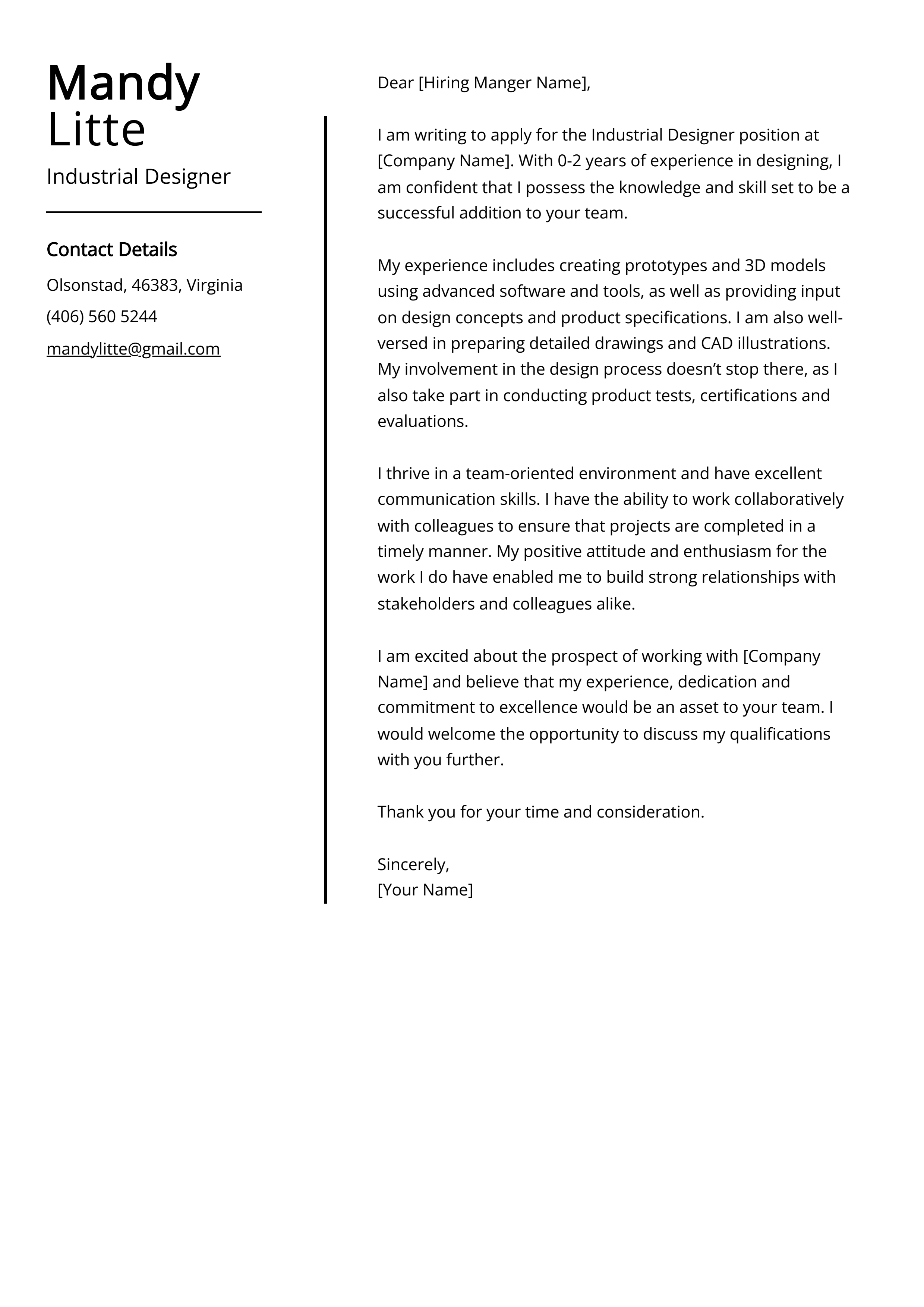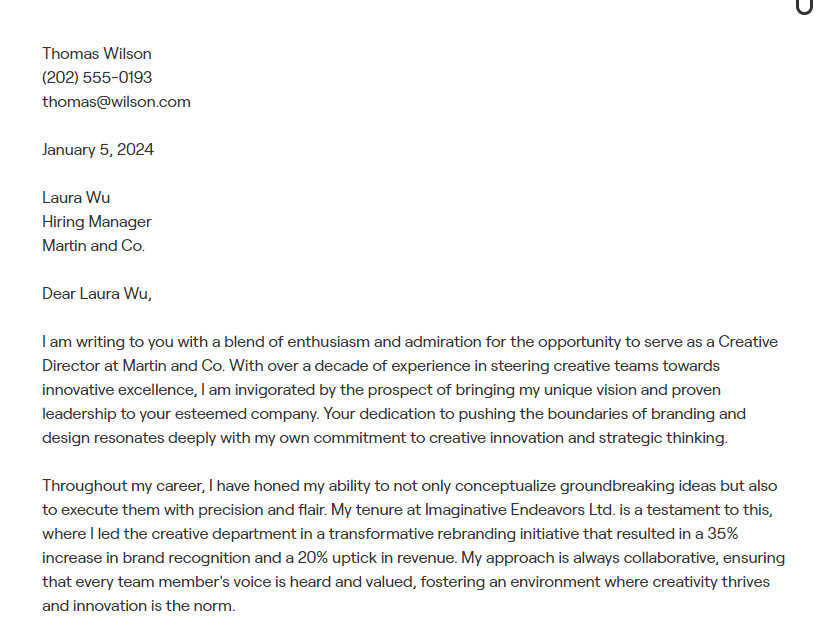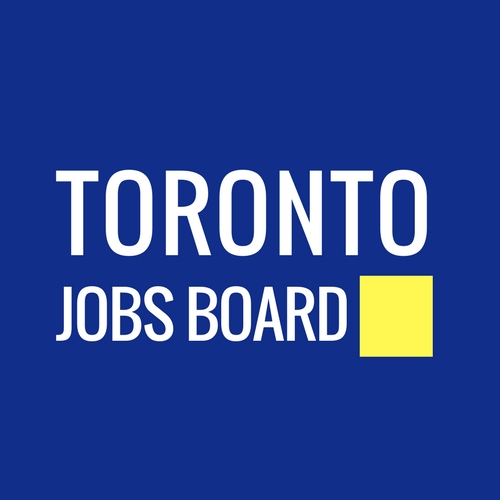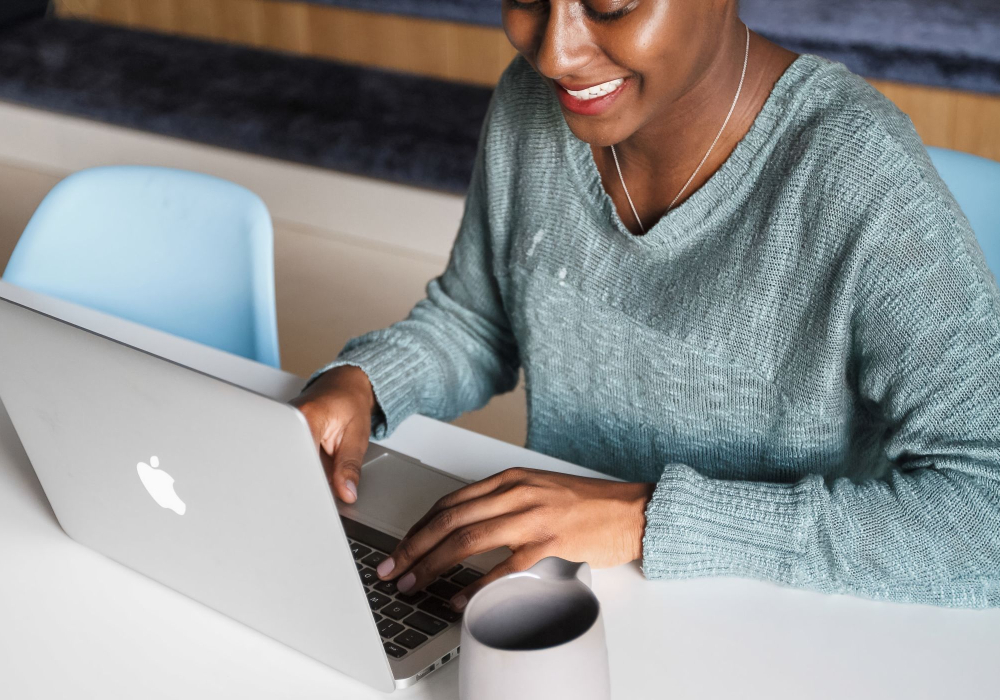To write a standout cover letter for design roles, highlight your unique skills and align them with the company's needs. Be concise and demonstrate your creativity.
A well-crafted cover letter for design roles can set you apart from other candidates. Start by researching the company to understand its design aesthetics and culture. Tailor your cover letter to reflect this understanding. Emphasize your relevant experience and specific design skills.
Use clear, concise language to showcase your achievements. Mention any notable projects or awards that demonstrate your expertise. Conclude with a strong statement of enthusiasm and a call to action, encouraging the employer to review your portfolio. By following these steps, you can create a compelling cover letter that captures the attention of hiring managers and increases your chances of landing the job.
Crafting an attention-grabbing introduction
Writing a standout cover letter for design roles starts with crafting an attention-grabbing introduction. This first impression sets the tone and showcases your enthusiasm and capabilities. A well-written introduction can capture the hiring manager's interest and make them eager to read more.
Showcasing your passion

Your passion for design should shine through in the introduction. Start with a strong opening sentence that reflects your enthusiasm for the field. You might mention a specific aspect of design that excites you or a recent project that inspired you.
Example: "Design is not just my profession; it's my passion. I was thrilled to see an opening for a role at your innovative company."
Next, explain why you are passionate about the role you're applying for:
- Mention the company's work: "I've admired your work on the XYZ project."
- Align your passion with the company's mission: "I believe in creating designs that make a difference, aligning perfectly with your company's mission."
By expressing your genuine interest, you make a personal connection and show that you're not just applying for any job; you're applying for this specific role because it excites you.
Highlighting your unique skills
Once you've showcased your passion, it's time to highlight your unique skills. This is where you can stand out from other candidates. Start by mentioning specific skills relevant to the job description:
- Technical skills: "My proficiency in Adobe Creative Suite and Sketch allows me to create stunning visuals."
- Soft skills: "My strong communication skills ensure seamless collaboration with team members."
It's also beneficial to provide examples of how you've successfully used these skills in the past:
| Skill | Example |
|---|---|
| UI/UX design | Redesigned the user interface of a mobile app, increasing user engagement by 30%. |
| Project management | Led a team of designers to complete a project two weeks ahead of schedule. |
Highlighting your unique skills with specific examples makes your introduction memorable. It also provides concrete evidence of your capabilities, reinforcing your suitability for the role.

Researching the company and tailoring your content
Writing a standout cover letter for design roles requires more than just listing your skills. Researching the company and tailoring your content is crucial. This step helps you understand what the company values and how you can present yourself as the best fit. Dive deep into the company's culture and align your design style to match their needs.
Understanding the company culture
Understanding the company culture is vital. This ensures your cover letter resonates with the hiring team. Here are ways to get insights:
- Visit the company’s website: Read their ‘About Us’ page, mission statement, and values.
- Check their social media: Observe how they interact with their audience and what kind of content they share.
- Read employee reviews: Websites like Glassdoor provide insights into the company’s work environment.
Once you gather this information, mention specific aspects of the company culture in your cover letter. For example:
| Company Value | How to Address in Cover Letter |
|---|---|
| Innovation | Highlight your creative projects and how you embrace new challenges. |
| Collaboration | Discuss your experience working in teams and how you contribute to group success. |
| Customer-focused | Show examples of how your designs solve real customer problems. |
Aligning your values with the company's culture demonstrates your genuine interest and suitability for the role.
Aligning your design style
Aligning your design style with the company’s aesthetic is crucial. Review their portfolio, website, and social media to understand their design preferences. Pay attention to:
- Colour schemes and typography: Note the colours and fonts they frequently use.
- Design elements: Identify patterns, shapes, and icons that appear often.
- Visual tone: Determine if their style is modern, classic, playful, or professional.
In your cover letter, mention specific design elements that align with the company's style. For instance, you might say:
"I noticed your preference for minimalist design. My portfolio includes several projects that emphasize clean lines and simplicity, which I believe would resonate with your aesthetic."
Another way to show alignment is by including links to your portfolio with similar designs. This allows the hiring team to see firsthand how your style matches their brand.
Tailoring your content to reflect the company’s design style not only shows attention to detail but also proves that you’ve done your homework and are genuinely interested in the role.
Emphasizing relevant experience and projects
Writing a standout cover letter for design roles requires careful attention to detail. Emphasizing relevant experience and projects is essential. This demonstrates your skills and shows how you can add value to the company. Let's explore how to highlight key design projects and connect your experience to the role.
Highlighting key design projects
When highlighting key design projects, focus on showcasing your best work. Share specific details about your role and the impact of the project. Use bullet points to make your achievements stand out:
- Project name: Redesign of XYZ Website
- Role: Lead Designer
- Impact: Increased user engagement by 25%
Incorporate a table to present your projects clearly:
| Project | Role | Impact |
|---|---|---|
| XYZ website redesign | Lead Designer | +25% user engagement |
| ABC mobile app | UI/UX Designer | +30% app downloads |
Keep your descriptions concise. Focus on the skills and tools you used. Highlight how your work solved a problem or improved the user experience. This will show your potential employer your capabilities and problem-solving skills.
Connecting experience to the role
Connecting your experience to the role is crucial. Tailor your past experiences to match the job description. If the role requires proficiency in Adobe Creative Suite, emphasize your expertise with these tools:
- Adobe Photoshop: 5 years of experience
- Adobe Illustrator: 4 years of experience
- Adobe InDesign: 3 years of experience
Use specific examples to demonstrate your skills:
- Project: Created a marketing brochure using Adobe InDesign
- Impact: Enhanced brand visibility, leading to a 20% increase in sales
Align your achievements with the company's goals. If the company values innovation, highlight projects where you introduced new design concepts. This makes your application more relevant. It shows you understand the company's needs and how you can contribute effectively.
Demonstrating your understanding of design trends
Writing a standout cover letter for design roles involves more than just listing your qualifications. One key aspect is demonstrating your understanding of design trends. Employers want to see that you are up-to-date with the latest trends and can apply them in your work. This not only shows your expertise but also your passion for design.
Showcasing awareness of current design trends
To make your cover letter shine, you need to showcase your awareness of current design trends. Mention specific trends that are relevant to the role you are applying for. This will indicate that you are not only knowledgeable but also proactive in keeping your skills updated.
- Minimalism: Highlight how you use clean lines and simple layouts to create impactful designs.
- Bold typography: Discuss how you incorporate striking fonts to enhance readability and aesthetics.
- Responsive design: Explain your experience in creating designs that adapt seamlessly to various devices.
Use a table to further illustrate your understanding:
| Trend | Application |
|---|---|
| Minimalism | Redesigned company website with a focus on simplicity and user experience. |
| Bold Typography | Created marketing materials with eye-catching fonts to attract attention. |
| Responsive Design | Developed mobile-friendly interfaces for better user engagement. |
By clearly demonstrating your awareness of these trends, you position yourself as a knowledgeable and forward-thinking candidate.
Linking trends to your work
It's not enough to just know the trends; you must link these trends to your work. Provide examples of projects where you have successfully implemented these trends. This will give employers a clear picture of how you apply your knowledge in practical scenarios.
- Project 1: E-commerce Website Redesign
Describe how you used minimalist design principles to enhance user experience and increase sales.
- Project 2: Social Media Campaign
Explain how you utilized bold typography to create engaging posts that boosted user interaction.
- Project 3: Corporate Website
Detail how you implemented responsive design to ensure a seamless experience across all devices.
Linking trends to your work in this way not only shows your practical experience but also your ability to adapt and innovate. This approach will make your cover letter stand out to hiring managers.
Showcasing your problem-solving abilities
Writing a standout cover letter for design roles requires more than just highlighting your skills. It's vital to showcase your problem-solving abilities. Employers want to see how you tackle challenges and come up with creative solutions. This section will help you highlight your problem-solving skills effectively.
Highlighting design challenges overcome
One of the best ways to demonstrate your problem-solving abilities is by highlighting design challenges you have overcome in the past. This shows employers that you are capable of handling difficult situations. Be specific about the challenges and how you addressed them.
Consider the following points when discussing design challenges:
- Identify the Challenge: Clearly describe the design problem you faced. This sets the context for your solution.
- Explain Your Role: Detail your role in the project. Were you the lead designer or part of a team?
- Highlight the Complexity: Mention any constraints such as tight deadlines, limited resources, or specific client requirements.
For instance, you could write:
"In my previous role, I was tasked with redesigning a client's outdated website. The challenge was to create a modern, user-friendly interface within a two-week deadline. As the lead designer, I had to manage the project, coordinate with developers, and ensure that the design met the client's expectations."
Use a table to summarize the challenges and your approach:
| Challenge | Your role | Complexity |
|---|---|---|
| Redesigning an outdated website | Lead Designer | Tight deadline, client-specific requirements |
| Creating a mobile app interface | UI/UX Designer | Limited resources, high user expectations |
Demonstrating creative solutions
After highlighting the challenges, it's crucial to demonstrate the creative solutions you implemented. This part of your cover letter should show your ability to think outside the box and deliver effective results.
Here are some tips for showcasing your creative solutions:
- Describe your approach: Explain how you approached the problem. Did you use any specific design methodologies or tools?
- Detail the solution: Provide a clear description of the solution you came up with. What made it unique?
- Show the impact: Mention the positive outcomes of your solution. Did it improve user satisfaction or increase sales?
For example, you might say:
"To tackle the website redesign, I conducted user research to understand the target audience's needs. I used wireframes and prototypes to test different layouts. The final design not only met the client's expectations but also resulted in a 30% increase in user engagement."
Highlighting your creative solutions can be further supported with visual aids such as:
- Before and after images: Show visual comparisons to illustrate the improvements.
- Data and metrics: Include statistics that demonstrate the success of your solution.
- User testimonials: Share feedback from users or clients praising your work.

Addressing the company's needs and challenges
Writing a standout cover letter for design roles requires more than showcasing your skills. It's about aligning your abilities with the company's specific needs and challenges. Understanding what the company seeks can make your application irresistible.
Offering solutions through design
Once you understand the company's needs, highlight how your design skills can address their challenges. Tailor your cover letter to demonstrate your problem-solving abilities.
Here's how you can do this:
- Refer to specific projects: Mention past design projects where you solved similar problems.
- Showcase relevant skills: Point out skills that match the company’s needs.
- Use data and results: Provide metrics to show the impact of your designs.
For example, if the company wants to enhance user experience, you might say:
“In my previous role, I improved user experience by 30% through intuitive design changes and user feedback.”
Incorporate visuals if possible, such as links to your portfolio or screenshots of your work. Visual aids can illustrate your design solutions effectively.
Be concise and focused. Avoid overwhelming the reader with too much information. Highlight your most relevant achievements and how they can benefit the company.
By aligning your skills with the company's needs, you demonstrate that you are not just a designer but a valuable problem solver. This approach increases your chances of standing out.
Conveying your fit and enthusiasm for the role
Writing a standout cover letter for design roles is an art. One of the key aspects is conveying your fit and enthusiasm for the role. This section will guide you on how to express genuine interest and align your career goals with the job you're applying for.
Expressing genuine interest
To catch the eye of the hiring manager, you need to show that you are genuinely interested in the role. This begins with thorough research about the company and the position. Mention specific projects or aspects of the company that resonate with you. Here's how you can do it:
- Research the company: Visit their website, read recent news articles, and check their social media profiles.
- Mention specific projects: Refer to a project the company has done that you find inspiring.
- Use the company’s language: Incorporate keywords from the job description and the company's mission statement.
For example, instead of saying, "I am excited about this role," you can say, "I am thrilled about the opportunity to contribute to your innovative project on sustainable design." This not only shows enthusiasm but also demonstrates that you have done your homework.
Aligning your career goals
Aligning your career goals with the job description is crucial. This shows the hiring manager that you are not just looking for any job, but this specific role aligns with your long-term career path. Here's how you can showcase this alignment:
- Identify key skills: Look at the job description and highlight the skills they are looking for.
- Match your experience: Align your past experiences with these key skills.
- Discuss future aspirations: Explain how this role fits into your career goals.
For instance, if the job requires proficiency in Adobe Creative Suite, you could say, "Throughout my career, I have mastered Adobe Creative Suite, which will allow me to excel in this role."
This makes it clear that your career path aligns with the company's needs, enhancing your chances of getting an interview.
Polishing your cover letter for professionalism
A standout cover letter can be your ticket to landing a design role. It's not just about showcasing your skills but also about presenting yourself professionally. Polishing your cover letter for professionalism is crucial in making a strong impression. To ensure your cover letter stands out, let's dive into some key aspects.
Ensuring clarity and conciseness
Clarity and conciseness are essential in a cover letter. Hiring managers often skim through many applications, so making your points clear and brief is vital.
- Use simple language: Avoid jargon and complex sentences.
- Stay focused: Stick to the key points that highlight your suitability for the role.
- Be direct: Start with your intent and follow with relevant experience.
Consider the following structure for your cover letter:
| Section | Content |
|---|---|
| Introduction | State your intent and the role you're applying for. |
| Body | Highlight your skills, experience, and how they relate to the role. |
| Conclusion | Summarize your interest and request an interview. |
Avoid lengthy paragraphs. Break down information into smaller sections. Use bullet points to list relevant achievements. This makes your cover letter easy to read and understand.
Proofreading for errors and typos
Errors and typos can undermine your professionalism. Proofreading is a crucial step to ensure your cover letter is polished.
- Read aloud: Hearing the words can help catch awkward phrases.
- Use tools: Tools like Grammarly can catch grammatical errors and typos.
- Get a second opinion: Have a friend or mentor review your cover letter.
Here's a quick checklist for proofreading:
- Check for spelling errors.
- Ensure proper punctuation.
- Verify correct usage of homophones (e.g., their/there).
- Look for consistent formatting.
- Ensure the tone is professional and friendly.
Multiple reviews can help catch different types of errors. Taking breaks between proofreading sessions can also give you a fresh perspective. A polished cover letter reflects your attention to detail and commitment to quality.

Crafting a standout cover letter for design roles is essential for landing your dream job. Highlight your creativity and relevant skills. Tailor each cover letter to the specific design position. Keep it concise and professional. Follow these tips to make a lasting impression on hiring managers.
Your perfect design role awaits!


